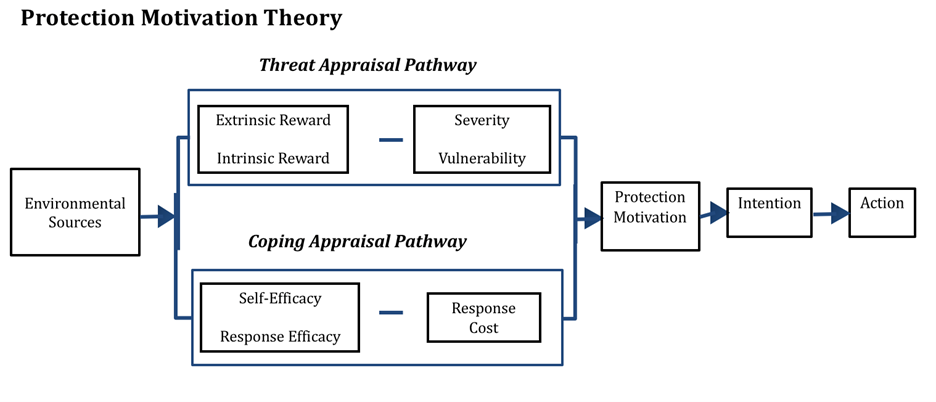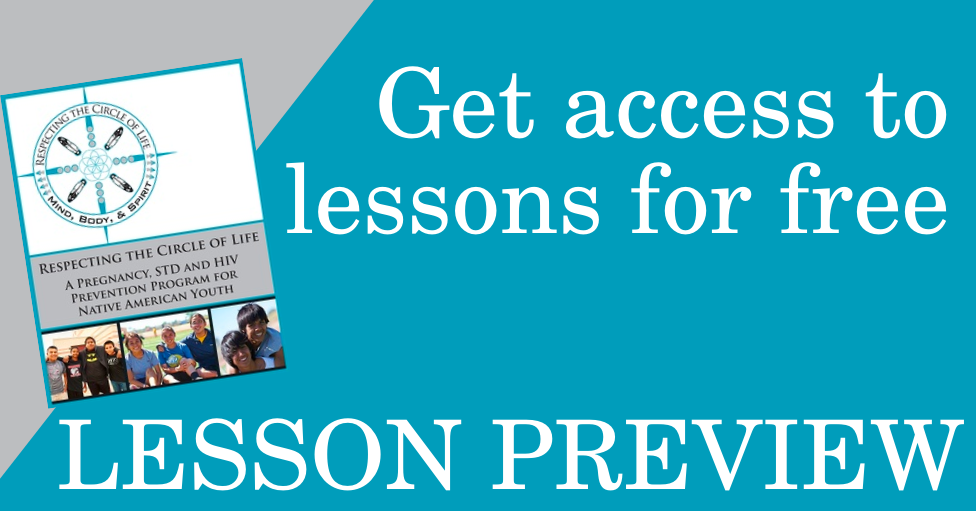Theoretical Framework
The Importance of Involving Parents/Trusted Adults
Respecting the Circle of Life promotes concentric circles of support for adolescents’ positive behavior change at individual, peer, family and community levels. Intergenerational intervention has special import to Native American communities as family is generally valued as the nexus of strength for individuals and been shown to yield great influence on adolescents’ behavioral choices.
Historical and present-day trauma have eroded traditional family structures (i.e., poverty and overcrowded households, single parent homes, high residential mobility) and contributed to intergenerational cycles of teen pregnancy. Native families experiencing these stressors may rely on a combination of immediate and extended family members as well as close friends for caretaking. Native parents and communities are eager for prevention interventions that strengthen entire family networks; thus, incorporation of parents or trusted adults in the program help make it socially and culturally congruent for youth and families and holds promise for reducing accumulated risk across generations.
About Protection Motivation Theory
Respecting the Circle of Life is based on Protection Motivation Theory (PMT). PMT is a social cognitive theory that emphasizes the balance between pressures to engage in a risk behavior (social and personal rewards), risks involved (severity of the undesired outcome, vulnerability), and considerations of the alternatives (how well the alternatives help avoid undesirable outcomes; ability of the youth to employ the alternative behavior; and social, personal, or other costs associated with employing the alternative).
In simpler terms, this can be seen as an appraisal of threat (e.g., What are the dangers of having unprotected sex?), balanced with an appraisal of coping (e.g., What are the benefits of abstinence or using a condom?). Self-efficacy plays a role in this appraisal process (e.g., Do I have the skills and knowledge I need to choose abstinence or use a condom?). PMT recognizes the influence of culture, family, and peers in the identification and recognition of risks. If culture, family, and peers all consider the threat of unprotected sex significant, chances are the individual youth will as well.

When an individual makes an appraisal of threat, the following constructs come into play:
- Internal rewards: Positive personal feelings in response to a threat (e.g., young person might see rewards in unprotected sex if they feel it will strengthen a romantic relationship or raise their status among peers).
- External rewards: Positive personal feelings in response to others’ feedback or reactions (e.g., a young person might see rewards in unprotected sex if friends are all encouraging them to have this experience).
- Severity: A belief about how severe the outcome of the risky behavior could be (e.g., how serious would it be to have unprotected sex and become infected with HIV?)
- Vulnerability: A belief about how likely the negative outcome is (e.g., how likely am I to become infected with HIV if I engage in unprotected sex?)
When an individual engages in coping appraisal, the following constructs come into play:
- Response efficacy: The belief that it’s possible to protect oneself from the negative outcome of the risky behavior (e.g., by choosing abstinence or using condoms).
- Self-efficacy: The individual’s belief that they are capable of using the protective behavior (e.g., Do I have the necessary knowledge and skills to choose abstinence or use a condom?).
- Response costs: A belief about the disadvantages of the protective behavior (e.g., drawbacks to using a condom).


